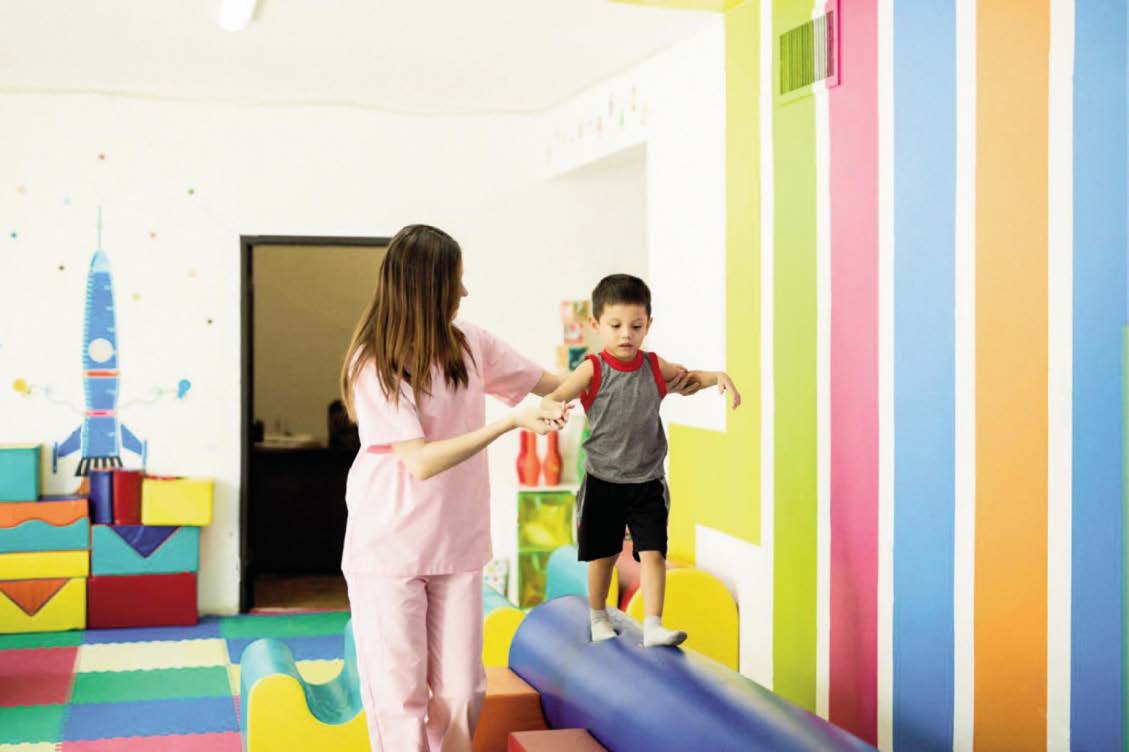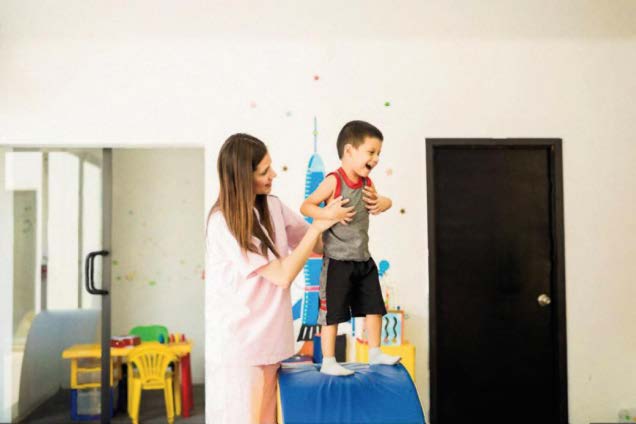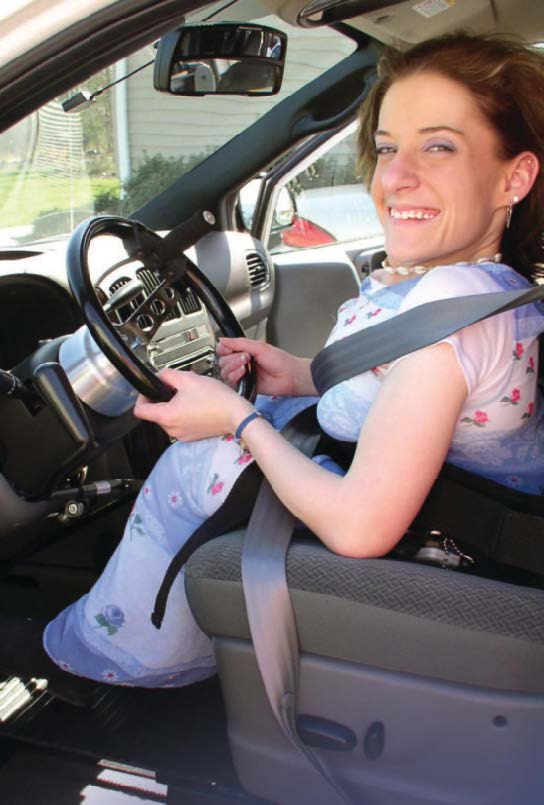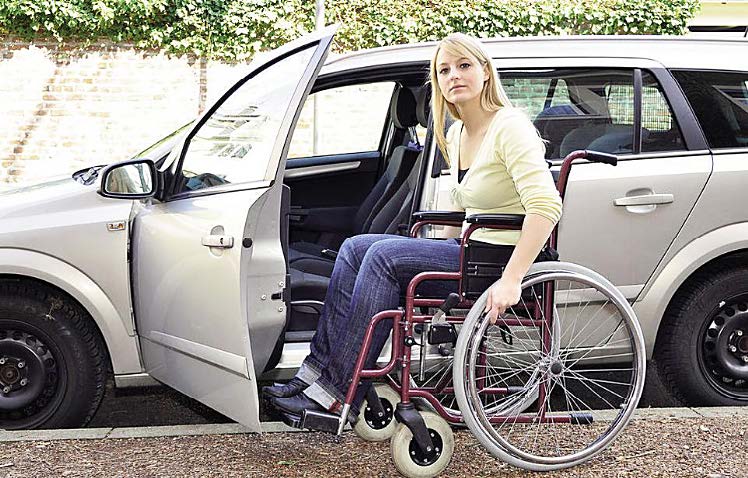
Improving Mobility by Participating in Research
Get involved and support research studies to help funding continue. Ask how you can help get more funding and awareness to research that would directly benefit the diagnosis that impacts your family.
When you or your child has a disability, I am sure that you try to stay up to date with what the latest research is studying – and what results seem promising. Looking into the studies that are starting can allow you to apply to be a participant. It is important to help the research process advance, and there may be great benefit from getting the newest treatment. However, you want to be discerning.
There are studies where the control group gets no treatment, and you are not allowed to explore outside interventions as this could skew the research results. You also want to ask about how participation in one study could impact your ability to participate in later studies. If your child or you have a disability due to neurological impairment, I am sure that you are waiting for stem cell treatments to advance. It is all very exciting and very promising – but it is not there yet. There was exciting news about a man who experienced a positive result with olfactory stem cells! I think every step forward makes you evaluate your current lifestyle and what you are doing to keep moving forward. Are you working out? Staying strong? Managing your weight? Research studies want the healthiest subjects to limit the impact of any co-morbidities. It is understandable – they want to maximize the positive results. The best thing you can do, whether or not you are trying to enroll in research studies, is to stay as active and healthy as possible. This will also help you or your child benefit from any new treatment that is developed.

Let's talk about locomotor training, and therapy, geared toward getting walking. There are many studies around this treatment for many diagnoses, and being able to walk is a common goal. There are many benefits to the body-weight-supported treadmill training. Your body is upright and moving. It helps your digestion, it helps spasticity, it could help improve circulation, and decrease pain. The body was built to move and walk, so this therapy makes many people feel better. As far as evidence based practice goes, we know that the nervous system needs a lot of repetition and intensity to make changes. The treadmill will do this. It can help promote connections and neuroplasticity, which is pretty awesome!
Walking is the goal for many people who come to physical therapy, and they are disappointed if their physical therapist does not put them on the treadmill. Here's the dirty little secret: if you are receiving your therapy as an insurance benefit, then in order to get payment from the insurance, the therapist has to abide by the guide lines set by the health plan. What they want to see is a measurable improvement in your functional mobility, and more often than not, the treadmill will help your body feel better and move better. But it may not give you the improved scores of standardized tests that insurances recognize. If improvements are not documented over the course of treatment, the clinic may not get reimbursed by the insurance! That's crazy, huh?
Treadmill training is not likely to change how much help you need getting out of bed. So what improves that? Practicing getting out of bed, strengthening innervated muscles, and staying flexible. Boring, I know. It could help increase flexibility and strength that could result in improved bed mobility, but it is difficult to predict.
Additionally, locomotor training on a treadmill requires multiple staff members to work with one patient. It is often very difficult for therapy clinics to afford this with the ever-decreasing reimbursement that insurance is providing.
The options out there are generally cashpay. And although it's costly, it has many benefits for you. You are now in control of your treatment course instead of an insurance company. You will get more individual time from your therapist. You may not need to work as often with the therapist since you get more time per session. Think about it. And, as previously mentioned, looking for local research studies that are looking at the benefits of treadmill training is another way to get this treatment at no cost.

AHEAD OF THE CURVE: The best thing you or your child can do, whether or not you are trying to enroll in research studies, is to stay as active and healthy as possible. This will also help you benefit from any new treatment that is developed.
Before trying any new treatment, you want to consider the risks. As great as treadmill training can be, there are things to be cautious about when getting upright. You have to make sure that your blood pressure cooperates. If you get orthostatic, it'll be difficult to work out. When you do not walk regularly, the bones get weaker. Unfortunately, this will happen even with interventions aimed at maintaining bone density. This puts you at risk for fracturing a bone. You're also at risk for injury of your soft tissues from the new, intense stress that the body is being put under. You may not feel an ankle sprain – or any other injury to an area you do not fully feel – but keep an eye on any swelling. Your therapist may use orthotics to limit the risk of injury to soft tissues and bones, but it is still important to monitor your body following each session. And, most important, WATCH YOUR SKIN! The harness straps could easily cause a sore with all the moving. Check your skin after every session and be sure to add extra padding if you notice any redness. And if you do get a sore, seek medical attention. Also, do not use the harness again until you are healed. Then you will have to ease in slowly with additional padding to make sure the sore does not occur again.
In conclusion, research is always progressing with interventions to Get involved and support research studies to help funding continue. Ask how you can help get more funding and awareness to research that would directly benefit the diagnosis that impacts your family. Be discerning about the quality of each study and weigh the pros and cons of participating in any research.•
THE FITNESS PRIORITY Kristin McNealus, PT, DPT, ATP received her Masters in Physical Therapy from Boston University then went on to earn her Doctorate in Physical Therapy from MGH Institute of Health Professions. She has been a staff physical therapist on inpatient rehabilitation for people with spinal cord injuries at a number of hospitals in Southern California, as well as Director of a community adaptive gym for people with neurological injuries. She is a member of the International Network Spinal Cord Injury Physiotherapists, and has contributed to the APTA Guidelines for Exercising with a SCI. She has completed 3 marathons, and 25 triathlons, including the Ironman! SCI Total Fitness is designed to promote health and wellness for people with physical disabilities.

Independence is an important precursor to driving, so parents who hope to see a son or daughter with disabilities behind the wheel are advised to start fostering independence and decision-making early on.
IN THE DRIVER'S SEAT
STUDENTS WITH DISABILITIES BEHIND THE WHEEL

READY, STEADY, GO: Young adults with invisible processing disorders, including Asperger's sydrome, high functioning autism, attention deficit hyperactivity disorder and learning disabilities, might feel anxious and unprepared once they get on the road.
Many teens count down to their 16th birthday, anxious for the freedom that comes with a driver's license. It is a rite of passage.
But for those with disabilities, the adaptations needed to get behind the wheel – and the decision about whether to drive at all – can be complex.
It may come as a surprise, but the physical challenges related to disability are often the easiest to address because it is possible to fit a car with adaptive tools – buttons, pedals and knobs - to make it physically possible to drive. The biggest obstacle for many teens with disabilities is the visual processing aspect of driving. Many drivers with disabilities may not recognize where they are in space relative to other objects, and the ocular motor skills used to scan and react may be slower or less accurate, so it takes them longer to process the environment.
Consider the complex sequence of steps needed to stop a car at a stop sign: I see the sign. Where do I put my foot? Where do I need to look? How do I signal my stop? How hard do I press down? How soon do I start the process? When do I need to check the mirror? These are the same steps any new driver must consider, organize and carry out, but for drivers with disabilities, sequence and processing speed can present a problem. Young adults with invisible processing disorders, including Asperger's sydrome, high functioning autism, attention deficit hyperactivity disorder and learning disabilities, can get pushed through generic driver education programs. They might even get a license, but once they get on the road, they feel anxious and unprepared. Without question, driving is an unpredictable experience filled with unanticipated delays, detours, objects in the road, and yes, flat tires! When a young person does not respond well to the unexpected or a change in routine, driving preparation must address these realities as well.
Then, there is the issue of distraction or failing to identify important variables in the environment. While all drivers - new and experienced - can get distracted, it is a particular problem for novice drivers. About 60% of teen crashes involve driver distraction, and more than 421,000 people were injured in motor vehicle crashes involving a distracted driver in 2012. The National Highway Traffic Safety Administration reported that 'recognition error' – failure to notice a critical element – accounts for more than 40% of all crashes, more than driving under the influence or speeding combined. These issues are magnified for drivers with disabilities.
HIGH STAKES
According to AAA, nearly 3,000 drivers under age 20 died in motor vehicle accidents in 2012, and those under 20 accounted for 60% of passenger fatalities. National Highway Traffic Safety Administration data show that drivers over the age of 60 have increased rates of fatalities, and suffer more serious injuries in crashes than do younger drivers. And as the number of miles driven increases, so too do fatality rates. It is therefore vital that drivers are ready before they get behind the wheel.
Some parents feel fully prepared to teach their teens to drive and are confident that their children are ready to get behind the wheel. Others worry that their own fears and doubts are clouding their judgment and worse, causing their children to share their anxieties. For them, mobility decisions become a source of frustration and concern.
A Certified Driver Rehabilitation Specialist (CDRS) can help. A CDRS has specific training, experience and understanding when it comes to both physical and "invisible" special needs, such as learning disabilities, dyslexia, and high-functioning autism. Some CDRS professionals also hold other credentials, such as Occupational Therapist or Physical Therapist. Driver rehabilitation specialists perform comprehensive evaluations to identify appropriate adaptive equipment. A complete evaluation includes vision screening and, in general, assesses:
* Muscle strength, flexibility, and range of motion
* Coordination and reaction time
* Judgment and decision making abilities
* Ability to drive with adaptive equipment
Upon completion of an evaluation, clients receive a report containing specific recommendations on driving requirements or restrictions, and a complete list of recommended vehicle modifications.
A clinical pre-driver evaluation helps identify strengths and weaknesses, and anticipate the types of driving errors the individual is likely to make. The behind-the-wheel evaluation is where we observe actual skills and determine driving potential. Often, a student needs to get into the car several times to tease out what is due to typical novice driver behaviors and what is due to the disability. Specialized evaluations can be costly, but there is help. Vocational rehabilitation agencies and workers' compensation agencies may assist in the cost of a driver evaluation. In addition, a private health insurance company may pay for part or all of the evaluation. A doctor's prescription or other documentation may be needed to receive such benefits.
LAWS AFFECTING DRIVERS WITH DISABILITIES
The Americans with Disabilities Act (ADA) protects drivers with disabilities in several ways. State offices of motor vehicles are prohibited from denying an individual a license to drive solely because he or she has a disability. In addition, drivers with mobility-limiting disabilities are entitled to pay the self-service price for fuel at a fullservice gas station.
States set their own rules for granting licenses to drivers with disabilities, but any driver who can pass the necessary exams with reasonable accommodation is eligible to receive a driver's license. If seeking an accommodation, the driver must disclose his or her disability at the time of application. Depending on the nature of the disability, a state may be entitled to issue a restricted license. State DMV offices also can issue specialty permits and license plates that grant preferred parking. State and federal law governs the installation of adaptive equipment on passenger vehicles. An approved vendor must perform installation of mobility equipment, especially if the driver is seeking funding from the Department of Vocational Rehabilitation or the Veteran's Administration.

REINVENTING THE WHEEL : Like all adaptive technology, vehicle modifications can be high tech or low tech. Power steering, which is found in most cars today, can be especially helpful to drivers with a weaker upper body, or someone who uses hand controls.
VEHICLE MODIFICATIONS
Like all adaptive and assistive technology, vehicle modifications can be high tech or low tech. Even a generic convenience such as an automatic transmission can be considered an adaptive device, because it eliminates the need for a clutch and manual shift. Similarly, power steering, which is found in most cars today, can be especially helpful to drivers with a weaker upper body, or someone who uses hand controls.
who uses hand controls. There are more specialized technologies, too. Steering devices, such as steering knobs, cuffs and palm grips can be installed to help drivers who need better grip control for steering. It is even possible to equip a vehicle with floor-mounted steering controls. Other adaptive devices include a raised roof or dropped floor to make room to accommodate a driver seated in a mobility device; a left-foot accelerator; a pedal extender that raises the height of the brake and accelerator, so the driver can control them with his/her hands.
Sometimes, even after the modifications are made and the individual is physically able to carry out the tasks associated with driving – steering, breaking, accelerating – is becomes clear that there are other challenges, often related to visual processing.
The costs for modifying a vehicle can vary. Some adaptive equipment, such as a special seat-back cushion, can provide a better view of the road for as little as $50. More complex equipment, such as hand controls, can be purchased for under $1,000. A new vehicle modified with adaptive equipment will cost anywhere from $20,000 to $80,000.
PREPARING YOUNG PEOPLE FOR DRIVING
Independence is an important precursor to driving, so parents who hope to see a son or daughter with disabilities behind the wheel are advised to start fostering independence and decision-making early on.
Consider the skills that young people need to drive: they have to be able to be alone, follow rules and regulations, solve problems as they happen, understand time to reach a destination promptly, and manage the financial and maintenance responsibilities of a vehicle. As pre-drivers, young people need to master basic self-management skills, and need experience planning and sequencing activities. And they need to do it on their own, without a coach. For example, trusting a teen to operate the dials on a washing machine may seem unrelated to the weighty responsibility of driving a car, but common activities like this will gradual ly prepare children of all ages to build the foundation skills needed to drive later. Another strategy that promotes readiness skills, is to start early with "commentary driving" in the car, engaging the student as an active passenger.

Parents can narrate the driving experience, with the student in the passenger sear, teaching them how to scan, think and pay attention like a driver. Riding a bike is also a good prerequisite to driving, and can help with understanding the rules of the road.
At Y.A.L.E. School in Cherry Hill, New Jersey, educators have launched a new program called Mobility Matters® designed to help teach pre-requisite skills through a comprehensive transition curriculum that encompasses decision-making, problem solving, financial literacy, and hands-on learning. The program integrates developmental mobility skills to students as young as 7, designed to promote personal independence. Progressively introducing these skills and building one upon another can help the young person get ready for independent mobility - and perhaps, eventually, a drivers license.
Y.A.L.E. School also offers new pre-driver competency training program for high school students with processing difficulties featuring DriveFit, a state of the art visual scanning app for the iPad as well as a fullyequipped driving simulator, both using virtual driving scenarios, and a progressive mobility curriculum designed by driving rehabilitation specialists and occupational therapists. A collaboration with research partners including Clemson University enables the school to pioneer best practices. While not all students with Aspergers will be able to drive, this training program can help get them one step closer to being ready.•